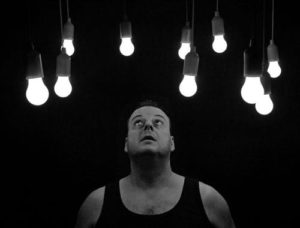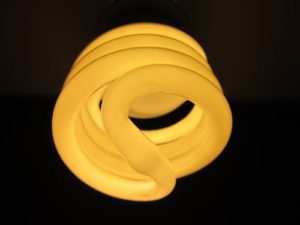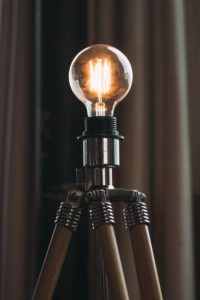Nobody likes to waste money, and with additional stresses in life, we want to know we are making the right purchases before we shell out our hard-earned cash.
When it comes to energy efficient light bulbs, we can really consider two options; Compact Fluorescent Lamp (CFL) or Light Emitting Diode Bulbs (LED). Both are inherently different in both design and manufacturing process.

CFL’s were designed as an energy saving lamp to replace the old incandescent light bulb. They are a curved glass tube filled with a gas and an electronic ballast in the base of the lamp. CFL’s generally use a fifth of the energy of an incandescent bulb and are an inexpensive option when it comes to upgrading your light bulbs. The spiral type CFL lamp that we are used to seeing today was invented in 1976 by Edward E Hammer, an engineer working for the General Electric company. In order for GE to manufacture these bulbs they would have had to spend $25 million dollars building new factories and instead let the invention sit by the way side. Eventually being copied by other manufacturers. In 1995, CFL’s manufacturer in China by the Shanghai Xiangshan company became available commercially worldwide, and the popularity of the bulb has steadily increased since then being the most dominant bulb in the Chinese residential market in 2011.
CFL bulbs are glass tubes filled with phosphors that ignite to emit light. These phosphors include toxic mercury gas which can be poisonous if ingested. CFL lamps also emit ultraviolet and blue lights which may pose added health risks according to the European Commission; SCENIHR in 2008.


LED bulbs produce light using one or more Light Emitting Diodes and sophisticated electronic chips. The first LED’s were produced in the early 1960’s and were only capable of emitting low frequency red spectrum light. The first blue spectrum LED was demonstrated in 1994 by the Nichia Corporation. Shuji Nakamura, Isamu Akasaki and Hiroshi Amano were later awarded the 2014 Nobel Prize in Physics for the invention of this technology.
These LED’s are now capable of emitting a full color spectrum as well as up to 100,000 hour lifespan with very little energy losses. The major downfall with LED technology is the susceptibility to damage from heat and a high inrush of current to “ignite” the lams, thus leading to difficulties in dimming and the life span of the drivers and chips.


With the price of LED bulbs significantly dropping and the great advancements that are being made year over year in the technology, we are now seeing the death of the CFL and all other types of lamps. In residential settings, homeowners are able to easily find the colour spectrum they prefer and do not have to make a large initial investment in upgrading their bulbs.
In commercial spaces such as warehouses and retail stores, the energy savings and lack of maintenance is not only paying for itself but paying dividends year over year in energy savings.
If you are convinced on upgrading all your homes bulbs to LED, your next step is to upgrade the dimmers and make your home SMART! A quick buyers guide to our suggestions can be found here, or read our post on The Ultimate Guide To Everything Home Automation


